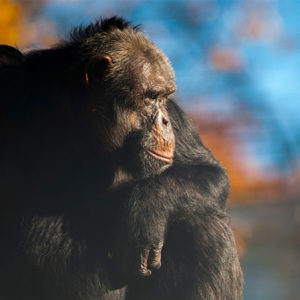An ASU-Conservation International study reveals that “the most important factor in protecting Liberia’s chimpanzees is simply to give them space – a radius of one to three kilometers of virgin forest,” as stated in an Afrik21 article titled “LIBERIA: giving chimpanzees space to thrive.”
The International Union for Conservation of Nature (IUCN) Red List of Threatened Species recently listed chimpanzees as Critically Endangered. The IUCN Red List categories consist of: not evaluated, data deficient, least concern, near threatened, vulnerable, endangered, critically endangered, extinct in the wild, extinct.
Since 1990, the western chimpanzee population has declined by 80%. The second-largest population of western chimpanzees, approximately 7,000 individuals, lives in Liberia. Not only is protecting Liberia’s forests crucial for safeguarding the chimpanzees’ habitats, but they are also a source of fresh water, food and jobs to locals.
In 2012, Liberia committed to conserving 30% of its remaining forests (1.5 million hectares) and prioritizing conservation efforts. One strategy to achieve this goal is to create natural corridors connecting various chimpanzee habitats.
